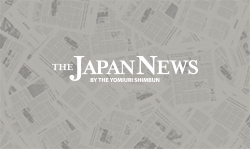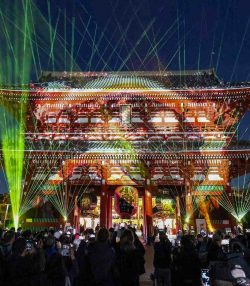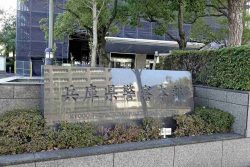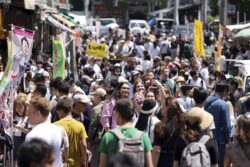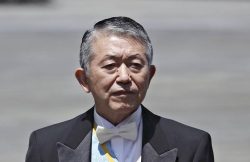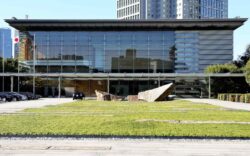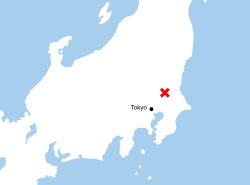
A moon-themed exhibition is currently being held at the Hundred Stairs and will continue through Dec. 1.
17:26 JST, December 2, 2024
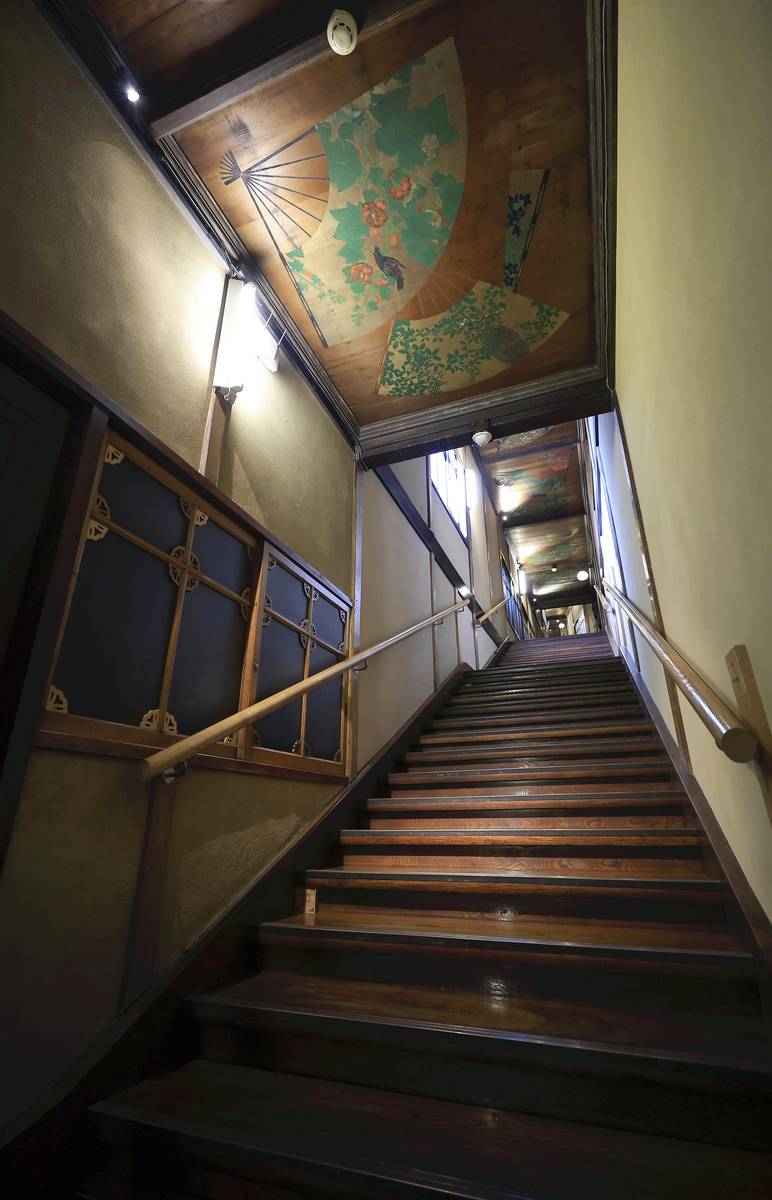
The Hundred Stairs lead to seven rooms. Visitors can enjoy looking at various types of decor, such as good luck charms painted on the ceiling panels.
Hotel Gajoen Tokyo, in Tokyo’s Meguro Ward, is home to a 99-step staircase known as the Hyakudan Kaidan, or the Hundred Stairs, a fixture which has been designated by the Tokyo metropolitan government as a tangible cultural property of the capital.
The stairs were originally part of the hotel’s predecessor, a complex of wedding halls and restaurants that was called Meguro Gajoen. The steps connect seven rooms which were decorated by accomplished artists as if in competition with each other. Even now, the building retains much of the look it had back when people referred to it as the “Showa no Ryugujo.” Showa refers to the Showa era (1926-89), of course, and Ryugujo, which literally means “dragon’s palace,” is the name of an undersea palace that appears in a folktale for children. It is now frequently used as a venue for exhibitions and other functions, capitalizing on the building’s characteristic structure and gorgeous design.
Meguro Gajoen opened in 1931 as a Japanese-style restaurant, operated by businessman Rikizo Hosokawa. At its peak, the facility had seven separate buildings on a huge site covering about 60,000 square meters. The Hundred Stairs section was built in 1935 as part of the No. 3 building along a steep slope called Gyoninzaka on the north side of the grounds. The staircase, whose stairs are all made of five-centimeter-thick planks of zelkova wood, connects four small houses, each with one or two rooms. Until the final years of the Showa era, the rooms were used mainly as halls for banquets and weddings. The staircase and the rooms are the only wooden structures from those days that still remain on the grounds.

Mt. Fuji is among the motifs painted on the ceiling in the Seisui-no-Ma room.
Each room boasts distinctive decorations and designs, such as the Jippo-no-Ma room, which is adorned with black-lacquered mother-of-pearl inlays; the Gyosho-no-Ma room, with an eye-catching alcove post made of a large piece of Japanese cypress and engraved with scenes from Chinese history; and the Sokyu-no-Ma room, from which it used to be possible to see Mt. Fuji. The ceilings and ranma transoms were painted by great artists who worked in traditional Japanese styles, such as Jippo Araki, Shuho Ikegami and Kiyokata Kaburaki. They all made the fullest use of their abilities in decorating the rooms. In fact, in the old days, brides would sometimes complain that the lavish artwork would draw attention away from them.
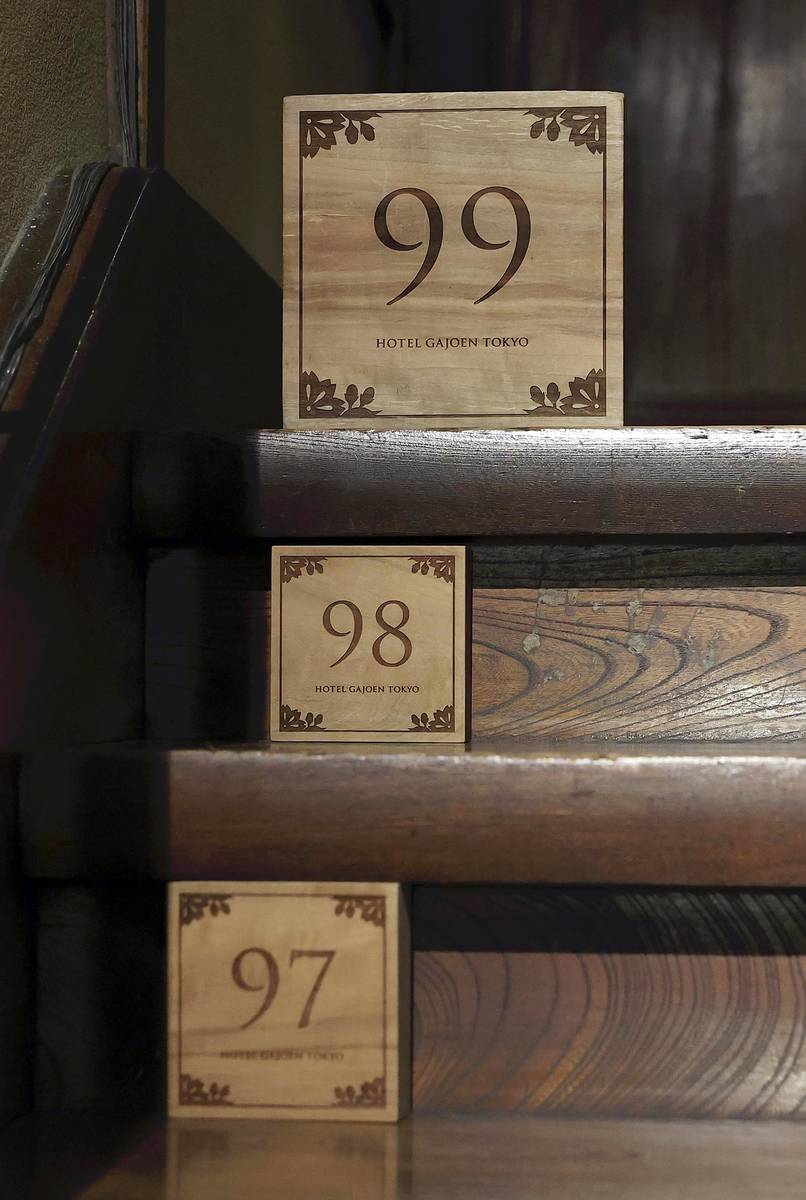
Each step of the Hundred Stairs is labeled with a number.
The interesting thing is that, despite the sumptuous decor, the original concept for the facility was “an upscale Japanese-style restaurant open to the public.” A newspaper advertisement at the time of the grand opening included such phrases as “Simple meals from ¥2 per person” and “We offer the same service for a family of three to five or a thousand-person banquet.”
By the way, why are there only 99 steps and not 100? According to Shino Asahioka, a public relations officer of Hotel Gajoen Tokyo, there are several theories, such as that odd numbers were considered lucky and that one was deliberately deducted from 100 because a state of perfection would not last long. It might be fun to ponder the mystery as you visit each room.
***
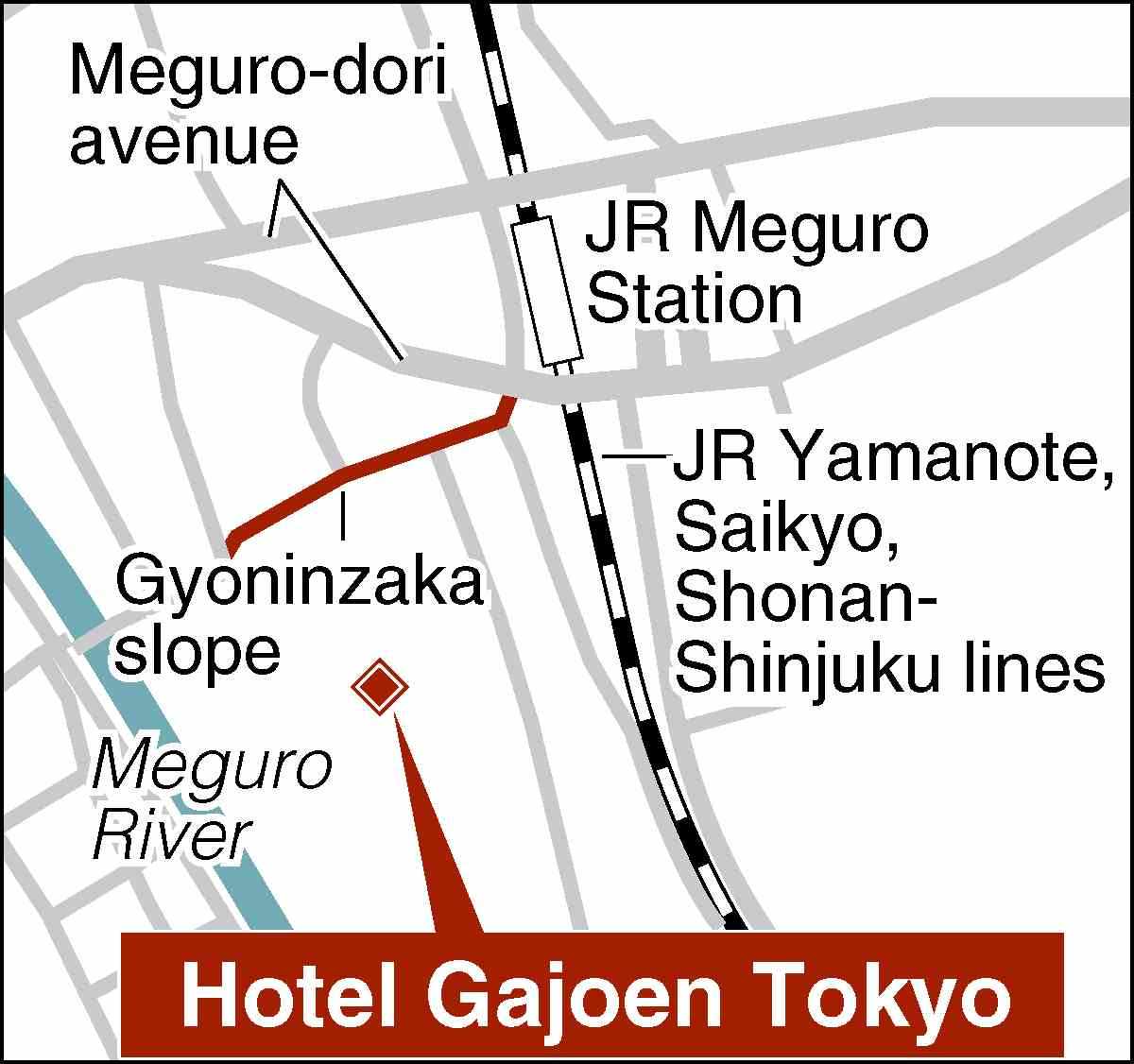
Hotel Gajoen Tokyo
Address: 1-8-1 Shimomeguro, Meguro Ward, Tokyo
Access: A three-minute walk from Meguro Station on the JR, Nanboku, Toei Mita and Tokyu Meguro lines
Memo: The Hundred Stairs are open to the public when an exhibition is held at the site. The facility can be reserved for wedding ceremonies and wedding photo sessions.
Related Tags
"Features" POPULAR ARTICLE
-

Sanrio to Open Museum in Yamanashi Pref. Dedicated to Founder, Exhibits Include Hello Kitty, Other Characters
-
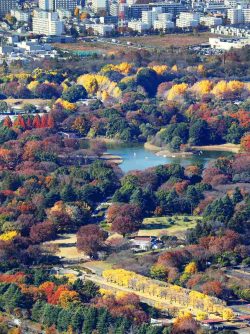
Autumn Foliage Surrounds Visitors to Tokyo’s Showa Kinen Park
-

My Daughter No Longer Speaks to Me, But I Want to See Her and My Grandchild
-

Kumamoto: Public Bath Refurbished as Library Where You Can Chat, Take Photos
-
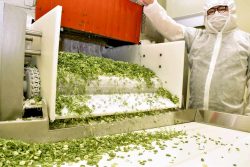
Frozen Vegetables: Demand Rises for Convenient, Tasty Domestic Produce
JN ACCESS RANKING
-

Keidanren Chairman Yoshinobu Tsutsui Visits Kashiwazaki-Kariwa Nuclear Power Plant; Inspects New Emergency Safety System
-
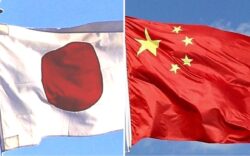
Imports of Rare Earths from China Facing Delays, May Be Caused by Deterioration of Japan-China Relations
-

University of Tokyo Professor Discusses Japanese Economic Security in Interview Ahead of Forum
-
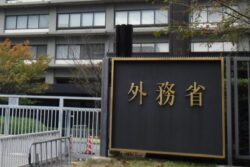
Japan Pulls out of Vietnam Nuclear Project, Complicating Hanoi’s Power Plans
-

Govt Aims to Expand NISA Program Lineup, Abolish Age Restriction






